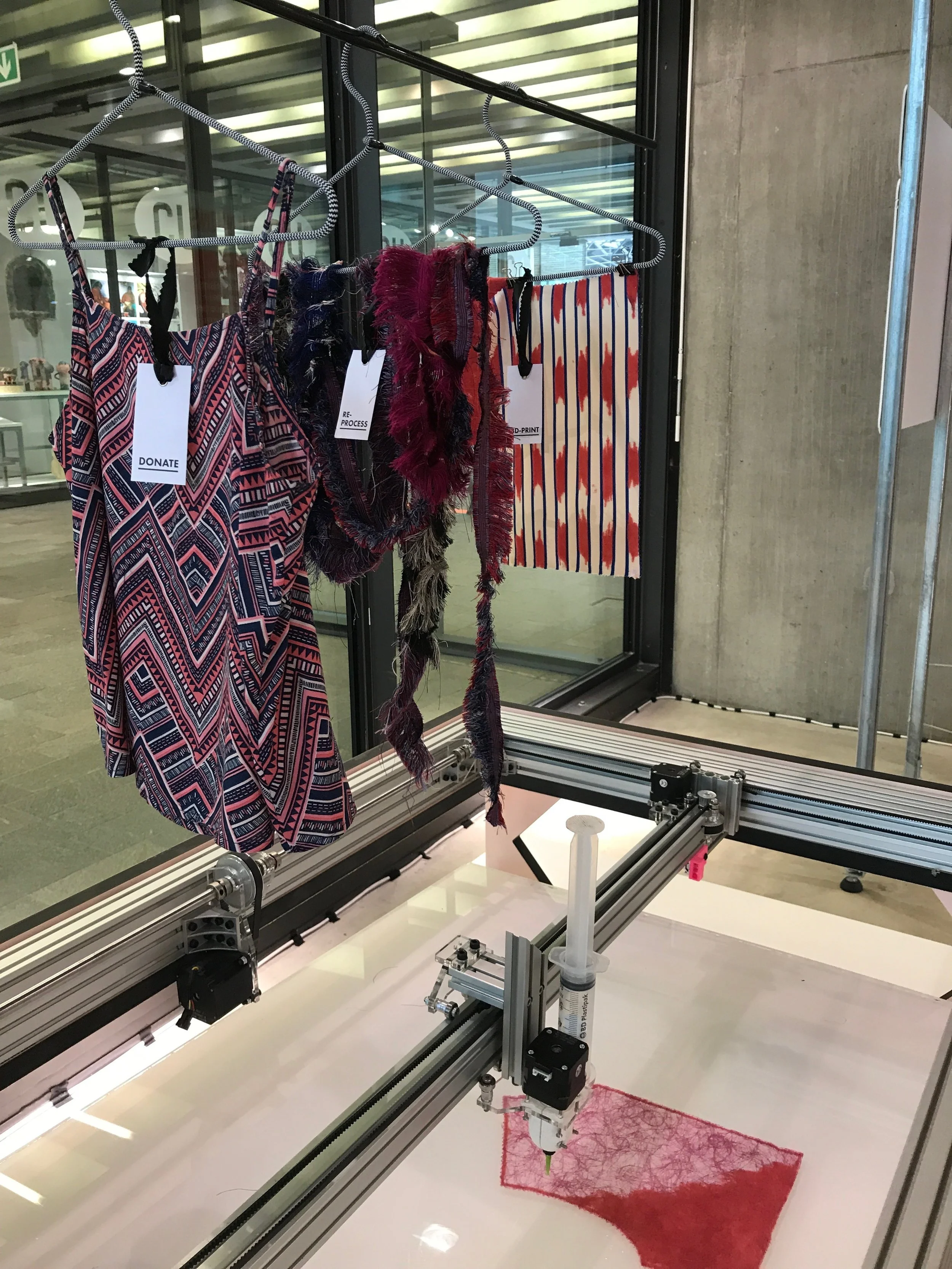Some notes on the RCA16 fashion cohort
An inspirational course leader sure can change things.
Timothy Bouyez-Forge's experiments with industrial fashion on display at the decaying Averard Hotel
When I talked to Zowie Broach after the RCA degree show last year - a catwalk display at the Kensington Gore institution - she seemed frustrated by the confines of the traditional show format. Her students needed something better than that, something with fewer constraints where they could let loose and be themselves.
So for this year's degree show, she found a derelict hotel in Lancaster Gate (you imagine there are a few like this, grand old faded places that have fallen into disrepair and through the cracks of the property developers). The students' work was shown here in proper old school edgy fashion, with a runway show, models wending their way through the shabby, decaying rooms with their peeling paint and chipped floor tiles; an evening of cross discipline poetry readings, film and dance; and a weekend of showroom presentations allowing the students to talk to a mix of industry insiders, press and family and friends about their work. It was a flexible format, giving the students maximum exposure and freeing them from the traditional showcase that seems so old and tired now.
Shoes by Marco Baitella
Some collections that really stood out for me each had elements of recycling and resourceful use of materials. I was fascinated by Kanghyuk Choi's re-appropriation of car air bags and the outer bags that contain them - one of which he had left pretty much in its original form - the addition of straps made it into a lightweight oversized bag.
Upcycled bag by Kangyhuk Choi
He took other airbags and dyed them to look grey and distressed - as though they had been through several Formula One races - and cut them into intricately pieced together jackets and coats. Choi told me he had found the nylon car innards as scrap and became inspired to use them. One visitor tried one of the jackets on and it looked great. Innovative, sustainable and smart.
Kang Choi and his crash test dummies
I was also struck by the work of Lilly Archibald whose work was all about emotional attachments and the spontaneity of physical touch leaving an imprint on the garment itself. She had taken garments that had meaning for her - like a T-shirt of her boyfriend's - and twisted, scrunched and played with the fabric to give physical imprints left by human connection, a permanence. The clothes themselves had a sense of the ordinary but they each held an emotional resonance and subtle beauty that is the stuff of timelessness and of clothes that are made to last a lifetime because they become part of you that you will never want to let go. This is the antidote to disposable fashion, something Archibald was proud to note.
Lilly Archibald's rail of everlasting resonance
Who else caught my eye? There were some super interesting footwear designers including Helen Kirkum who had taken old sports shoes apart and lovingly collaged them back together into something altogether more elevated and poetic like these below. Amazing what a little hand stitching can do. And the possibilities are endless of what a brand like Nike could do with such talent. Broken worn-out trainers can live forever in the hands of this crafty designer!
Re-made shoes with a lot of soul by Helen Kirkum
There were many other great designers and original ideas. But I will finish with the fully-fledged work of two designers, Miles Dunphy and Elsa Ellies who together have created their own brand, One By Me.
Miles Dunphy and Elsa Ellies on either side of their friend and house model, all wearing their own designs
One By Me is a really clever concept, a collection made using clever pattern cutting (single pieces if cloth are cut and draped and crocheted together to minimise on waste).
Ellies told me that they are working with the RCA innovation incubator to develop the project for children so that they can connect with the idea of making their own clothes - they can be sewn or even safety pinned together, and the cloth comes marked with the pattern in the form of an easy to make kit. I love the idea of children being able to create their own clothes folding, draping and wrapping to their own desires in these unisex, slightly futuristic shapes. It has a feeling of utopia about it all. And that's never a bad thing.
One size fits all, a new system of dressing by One By Me which will be available at The Library for SS17.














